
When the car crashed into the wall at 40 kilometers an hour, the baby flew directly out of the mother's hands and into the front window, headfirst.
This scene from a safety video made a big impact on Lin Xuewei. She fell silent for a long time. That afternoon, she went straight to Mothercare, a British store that sells products for pregnant women and children, and bought a car seat.
"I've always thought my children would get hurt only in a severe accident. I didn't know a speed of 40 kilometers could be that damaging," she said.
The video was made by Jennie Grierson, a stay-at-home mom from the UK living in Beijing, to promote awareness of child car seats and seat belts in China. There are also organizations, such as autohome.com.cn, that are providing shows and lectures on this issue as well. However, in China, the car seat usage rate is still low at 0.1 percent and many parents aren't aware of the issue.
Grierson started developing the idea to spread awareness on this issue back in 2011, after she saw many Chinese couples drive their children without sitting them in car seats or buckling them up.
"I saw how many Chinese parents and grandparents loved their children and wanted to protect them, but didn't protect them in cars," she said. "Promoting awareness of car seats can save lives."
The first time she saw Lin's family driving their daughter without a car seat was during a group outing. The two families went together to the countryside and the grandmother was sitting in the back, cradling the then-2-year-old girl on her lap.
"I went 'Oh no!'" Grierson said, warning Lin that it was very important to use car seats.
But Lin didn't take it seriously back then, dismissing it as a cultural difference.
After trying to convince Lin's family a few times and receiving no result, Grierson made the video in September, cutting clips from Youtube videos where dummy babies being cradled flew out of their parents' hands during demo crashes. She started spreading the video on the microblogging site Weibo.
The harm of not using a special car seat for children is obvious, said Zhu Tao, a transportation expert from the Beijing University of Technology.
"When cars crash or bump against each other, children can get hurt easily. The adult seat belt is not suitable for them. The air bags will also hurt the children because of the fast speed," he said. "They definitely can't sit in the front, and when sitting in the back seat they should be fixed into the car safety seat."
On July 1, 2012, the government released the first regulation about children's car seats in China, regulating the production and sale of car seats, and ensuring all new cars are made in a way compatible with the seats.
However, awareness in China is still low. According to Autohome, studies show the usage rate of car seats in China is lower than 0.1 percent.
"In the UK, the government has a special department to promote road safety … They do a lot of advertisements on prime time TV programs, really shocking reminders of why you need to wear seat belt, don't drink and drive," Grierson said. "Here, I don't think they are doing it yet."
Awareness spreads from person to person. Lin said her daughter, now 4, always sits in a car seat. She had also advocated the concept to her circle of friends.
"I think Chinese parents sometimes have the mindset that they might 'get lucky,'" she said. "But this is a serious matter, 40 kilometers per hour isn't that fast. This could happen to anyone."

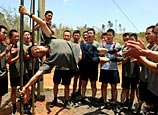

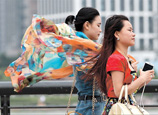

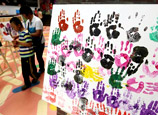

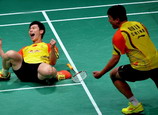
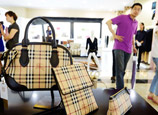







 China’s weekly story
China’s weekly story
(2013.5.18- 5.24)


![]()
